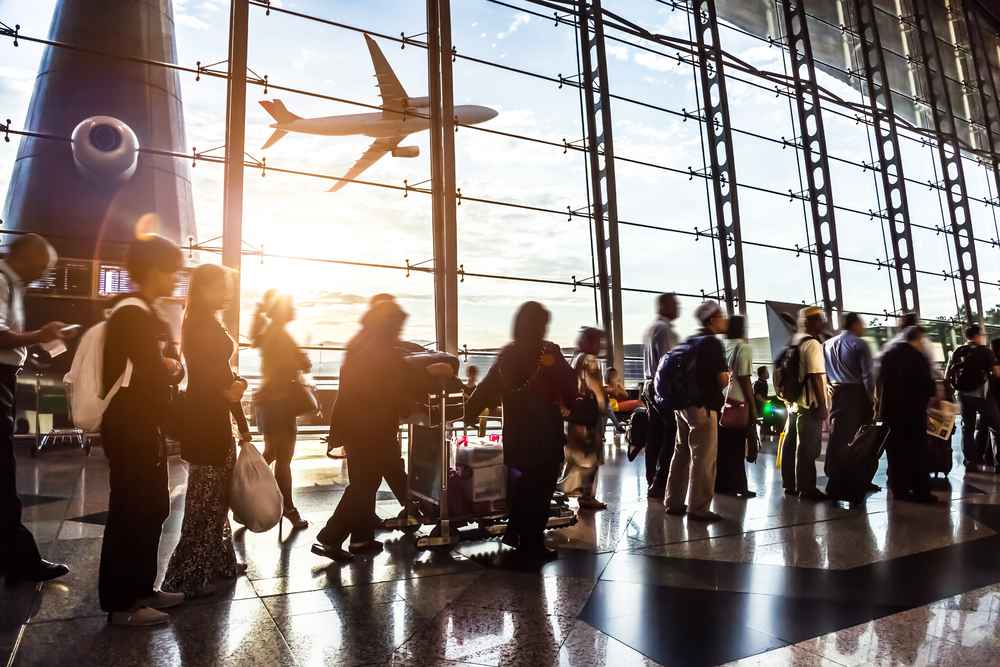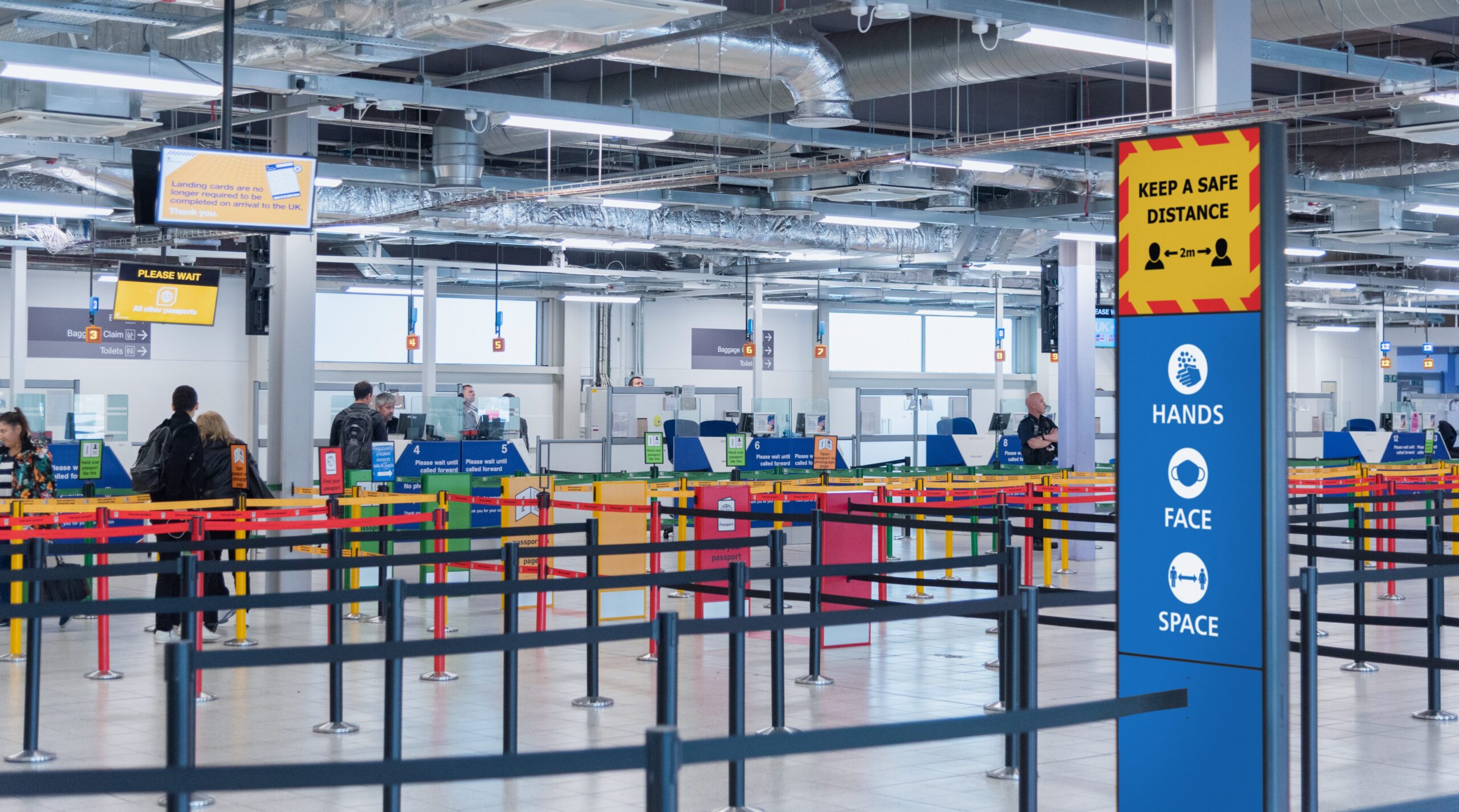- Home
- Sectors
- Solutions
- Tensabarrier®
- Tensator® Charging Stations
- Tensamedia® Wayfinding and Signage
- Lawrence® Post & Rope
- Tensator® Airport Passenger Guidance System
- Electronic Queuing – eQ™
- Tensaguide® Modular Barrier System
- Tensator Micam Protection – TMP
- Safety Solutions
- Access Control
- In-Queue Merchandising
- Virtual Queuing – VQMS
- Tensator® Virtual Assistant
- Custom & Bespoke Solutions
- Resources
- About
- Contact Us
- Shop
 English (English)
English (English)
17
Dec

In June 2019, the government announced £1 million in funding for the FASS programme to test and trial new prototype airport security measures. The aim is to increase screening effectiveness but also to lead to “shorter queues and faster, more efficient screening”. The funding sends a message that speed and efficiency, and effective queue management are key markers for airport success.
Until the security systems of the future arrive – and with passenger numbers rising – there are simpler and cheaper ways to improve efficiency in your airport. You might also be surprised how many queue management solutions there are!
Cutting queue waiting times is just one good example of how you can increase efficiency. Take a look at the list below to see if you’ve addressed all of these issues successfully in your airport terminal.
Find out more about Tensator solutions for the airport sector in our airports brochure.
-
Meet safety regulations
Air travel is, of course, a highly regulated industry. In and outside the terminal building, ASIAD compliance is a central consideration when designing a new building or making changes. Luckily, there are solutions available that are designed with compliance in mind, such as Tensator’s ASIAD compliant sign holder.
Tensator Micam Protection (TMP) wall protection/safety panels are another way to meet your legal requirements relating to ASIAD. They are fire and blast-resistant, minimising damage and injury from small airborne fragments in the event of an incident such as an explosion. They can help you protect passengers when used to line queuing and passenger transit areas, making your airport safer.
-
Use queue management solutions to cut waiting time
No passenger enjoys queueing, yet the airport experience can be full of waiting around. If you’re a terminal or operations manager, the race is always on to ease the pressure in busy areas like the baggage hall or security.
There are two really easy ways to shorten queues. One is to make the call forward process (or lack of one) more efficient. Call forward systems remove some of the uncertainty about which desk is free and which operator to go to. It’s amazing how much this uncertainty can slow the queue down: our eQ™ call forward technology has been shown to cut waiting times by up to 30%!
Another way to keep people moving is to arm them with the right information about what they need to do at the end of the line – which documents to have ready, what they need to take out of their carry-on bag at security, etc. You also need to make sure you get their attention, which can be an additional challenge.
‘Living signage’ like our Virtual Assistant gains customers’ interest in ways that digital screens and traditional signs may not. It can also be customised and translated into other languages.
-
Improve your airport passenger flow
Wayfinding solutions are the latest innovation to ‘take off’ in airport environments. They provide a strong visual reference that can be seen from a distance, helping your customers locate the start of the queue, service points and so on. They make it easier for visitors to navigate around unfamiliar terrain, while also meaning they don’t need to ask for help from staff.
Read our article on how wayfinding signage can benefit the customer experience
Safety barrier systems can help you introduce clarity and order to your queuing system. If you have fluctuating volumes, ShortCutQ helps you go one better. It features manual gates to let you change your queue layout; this allows customers to move through more quickly outside peak footfall periods, removing potential frustration.
Another way to improve flow is to plan and optimise your layout according to specialist advice. At Tensator, we offer consultancy on a bespoke basis; if you have questions about how you could make your space work better, get in touch.
-
Save on maintenance
A busy airport is subject to lots of everyday wear and tear, like knocks and scrapes from luggage trolleys and carts. Protecting your facilities from events like these is one way to increase the life of your fixtures and fittings.
Impact protection is a good option for areas you notice have a tendency to get damaged, for example, tight corners in a corridor. There are a number of options available, from rack protection, guard rails and bollards to column and wall protection.
Tensator Micam Protection (TMP) can cut maintenance costs by an impressive 50%. It saves you money (while making your staff’s lives easier) because it’s durable, anti-graffiti and tamper-resistant.
-
Think like a retailer
Retail revenues in airports and transport hubs aren’t an afterthought. Given the presence of luxury brands, a visit to the terminal and duty-free area can be a memorable shopping experience in itself. It can also represent a significant profit for those running retail concessions. According to the Boston Consulting Group, global travel revenue (including duty-free) has tripled in the last 15 years, reaching $69 billion (£54 billion) in 2017.
You can help airport retailers make sure the retail area is the best it can be. This is another place where considering airport passenger flow is all-important. Bottlenecks can happen easily in popular shops, or where there are common problems like confusion over which currency to use. eQ™ call forward technology is an ideal solution for retail environments like this because it allows 25% per cent more customers to be served per hour. (It can potentially increase revenue by up to 96%.)
If you learn that revenue is weaker in a certain area, such as a particular cafe or concession, it could help to investigate familiar issues like queue times or the efficiency of the layout. You could also bump up your publicity with banner solutions or wayfinding signage so the store is easier to find.




